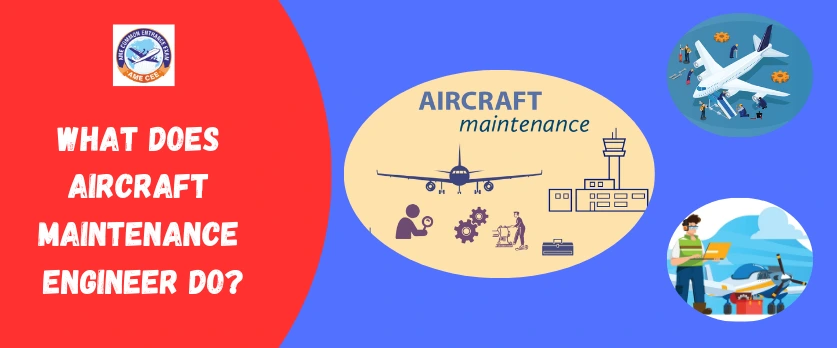An Aircraft Maintenance Engineer (AME) plays a critical role in ensuring the safety, airworthiness, and proper functioning of aircraft. The responsibilities of an AME include a wide range of tasks related to the inspection, maintenance, and repair of aircraft.
Here are the key duties and functions of an Aircraft Maintenance Engineer:
Pre-flight Inspections
Conducting pre-flight inspections to ensure that aircraft systems are in proper working order before each flight.
Routine Maintenance
Performing routine maintenance tasks as per the prescribed schedules and checklists, which may include tasks like lubrication, system checks, and component replacements.
Troubleshooting
Diagnosing and troubleshooting aircraft systems to identify and rectify any issues or malfunctions.
Scheduled Maintenance Checks
Conducting scheduled maintenance checks, including A-checks, B-checks, and C-checks, as outlined by the aircraft manufacturer and regulatory authorities.
Overhaul and Repairs
Overhauling and repairing aircraft components, systems, and structures to ensure they meet safety and performance standards.
Avionics Maintenance
Maintaining and troubleshooting avionic systems, which include communication, navigation, radar, and electronic flight instrumentation systems.
Engine Maintenance
Inspecting, repairing, and maintaining aircraft engines to ensure optimal performance and compliance with safety regulations.
Documentation
Maintaining detailed records and documentation of all maintenance activities, inspections, and repairs performed on the aircraft. This documentation is crucial for regulatory compliance.
Compliance with Regulations
Ensuring that all maintenance activities adhere to the regulations and guidelines set by aviation authorities, such as the Federal Aviation Administration (FAA) or the European Union Aviation Safety Agency (EASA).
Modifications and Upgrades
Implementing modifications and upgrades to aircraft systems or components as per approved engineering orders or service bulletins.
Component Replacement
Replacing worn-out or damaged components with new or overhauled parts to maintain the airworthiness of the aircraft.
Safety Inspections
Conducting safety inspections to identify potential hazards or issues that could compromise the safety of the aircraft.
Collaboration with Other Professionals
Collaborating with other aviation professionals, including pilots, ground crew, and maintenance personnel, to ensure effective communication and coordination.
Emergency Repairs
Performing emergency repairs when necessary to address critical issues that may affect the safety of the aircraft during flight.
Continuous Learning
Staying updated on advancements in aircraft technology, maintenance procedures, and regulatory changes through continuous learning and training.
The work of an Aircraft Maintenance Engineer is crucial for maintaining the airworthiness and safety of aircraft, and it requires a combination of technical expertise, attention to detail, and adherence to strict regulatory standards. AMEs contribute significantly to the overall reliability and safety of the aviation industry.
To join the certification Airport Management course, you could through AME CEE an entrance exam for aviation aspirants.


